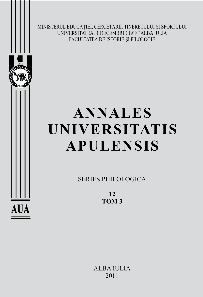Aspects of Marking Gender in English and Romanian
Aspects of Marking Gender in English and Romanian
Author(s): Constantin Manea, Maria Camelia ManeaSubject(s): Gender Studies
Published by: Universitatea »1 Decembrie 1918« Alba Iulia
Keywords: Gender; convention; norm; feminism; feminist linguistics
Summary/Abstract: The paper focuses on some of the main propositions, challenges, approximations and misconceptions that the feminist approach to language deals with – or possibly labours under. The question of the actual existence of gender-oriented languages (vs. “gender-neutral” languages) is addressed. There are indeeed languages that – by way of cultural tradition – pay more attention to marking the (essentially polite) specificity of Gender (or sex), as against some other languages in which, on account of the form-induced non-existence of grammatical gender, marking – and acknowledging the very existence of – gender is merely a matter of (incidentally) referential description. (A comparison could be drawn in this respect between Indo-European languages and some African languages, where ‘natural’ features like shape, size, colour, texture, etc. act as classificators). On the other hand, from a sociolinguistic standpoint, marking face (via down-toning and euphemisation) occasionally resorts to Gender neutrality. However, an increasing amount of disagreement is engendered by Gender neutrality – probably the domain most prone to dispute within the larger field of the so-called “PC speech” (i.e. Politically Correct language). Gender has lately grown into a major source of ideological, cultural, and more generally social, pressure in today’s English-speaking world. Gender-specific terminology in English has been replaced by gender-neutral terms in recent times. Indeed, (obsessive) gender-awareness evinces some clear features that circumscribe it within the (ideological, cultural, political, etc.) limits of manipulation through language. Actually, the term itself tends to be used in accordance with the socio-linguistic definition accountable for within the main areas of the broader PC phenomenon (as “sexual identity, mainly in terms of culture and society”). Feminine emancipation itself is currently decipherable under the umbrella of feminist linguistics. When a distinction is operated between gender groups in order to secure a superior status to the group traditionally considered weaker / oppressed, the social and ideological effects of the move are easily recognizable as beneficial. However, carrying it too far, and combining, in a rather disconcerting manner, biological, cultural, sociological and ideological data, observations, suggestions and angles, can conduce to feuds and real malfunctions: emancipation will be thus undermined by division and inflexibility. The authors discuss a number of examples typical of gender marking in English and Romanian, in an attempt to assess (if only in an approximate and tentative way) the specific substance of the (admittedly) polite manner in which Gender is expressed in these two languages, as well as the marks of that specificity of feminine language.
Journal: Annales Universitatis Apulensis. Series Philologica
- Issue Year: 12/2011
- Issue No: 2
- Page Range: 211-224
- Page Count: 14
- Language: English

